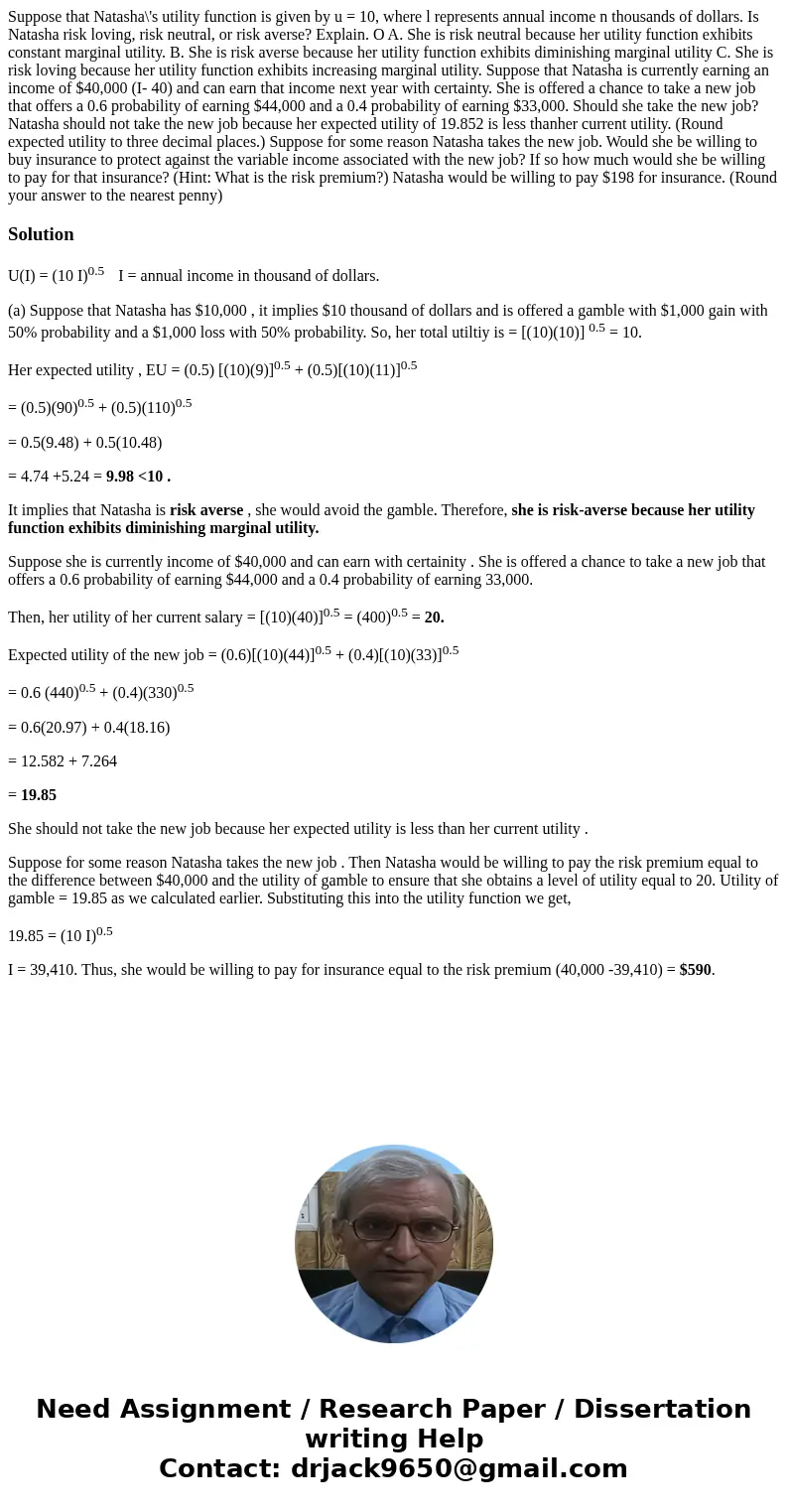Suppose that Natashas utility function is given by u 10 whe
Solution
U(I) = (10 I)0.5 I = annual income in thousand of dollars.
(a) Suppose that Natasha has $10,000 , it implies $10 thousand of dollars and is offered a gamble with $1,000 gain with 50% probability and a $1,000 loss with 50% probability. So, her total utiltiy is = [(10)(10)] 0.5 = 10.
Her expected utility , EU = (0.5) [(10)(9)]0.5 + (0.5)[(10)(11)]0.5
= (0.5)(90)0.5 + (0.5)(110)0.5
= 0.5(9.48) + 0.5(10.48)
= 4.74 +5.24 = 9.98 <10 .
It implies that Natasha is risk averse , she would avoid the gamble. Therefore, she is risk-averse because her utility function exhibits diminishing marginal utility.
Suppose she is currently income of $40,000 and can earn with certainity . She is offered a chance to take a new job that offers a 0.6 probability of earning $44,000 and a 0.4 probability of earning 33,000.
Then, her utility of her current salary = [(10)(40)]0.5 = (400)0.5 = 20.
Expected utility of the new job = (0.6)[(10)(44)]0.5 + (0.4)[(10)(33)]0.5
= 0.6 (440)0.5 + (0.4)(330)0.5
= 0.6(20.97) + 0.4(18.16)
= 12.582 + 7.264
= 19.85
She should not take the new job because her expected utility is less than her current utility .
Suppose for some reason Natasha takes the new job . Then Natasha would be willing to pay the risk premium equal to the difference between $40,000 and the utility of gamble to ensure that she obtains a level of utility equal to 20. Utility of gamble = 19.85 as we calculated earlier. Substituting this into the utility function we get,
19.85 = (10 I)0.5
I = 39,410. Thus, she would be willing to pay for insurance equal to the risk premium (40,000 -39,410) = $590.

 Homework Sourse
Homework Sourse